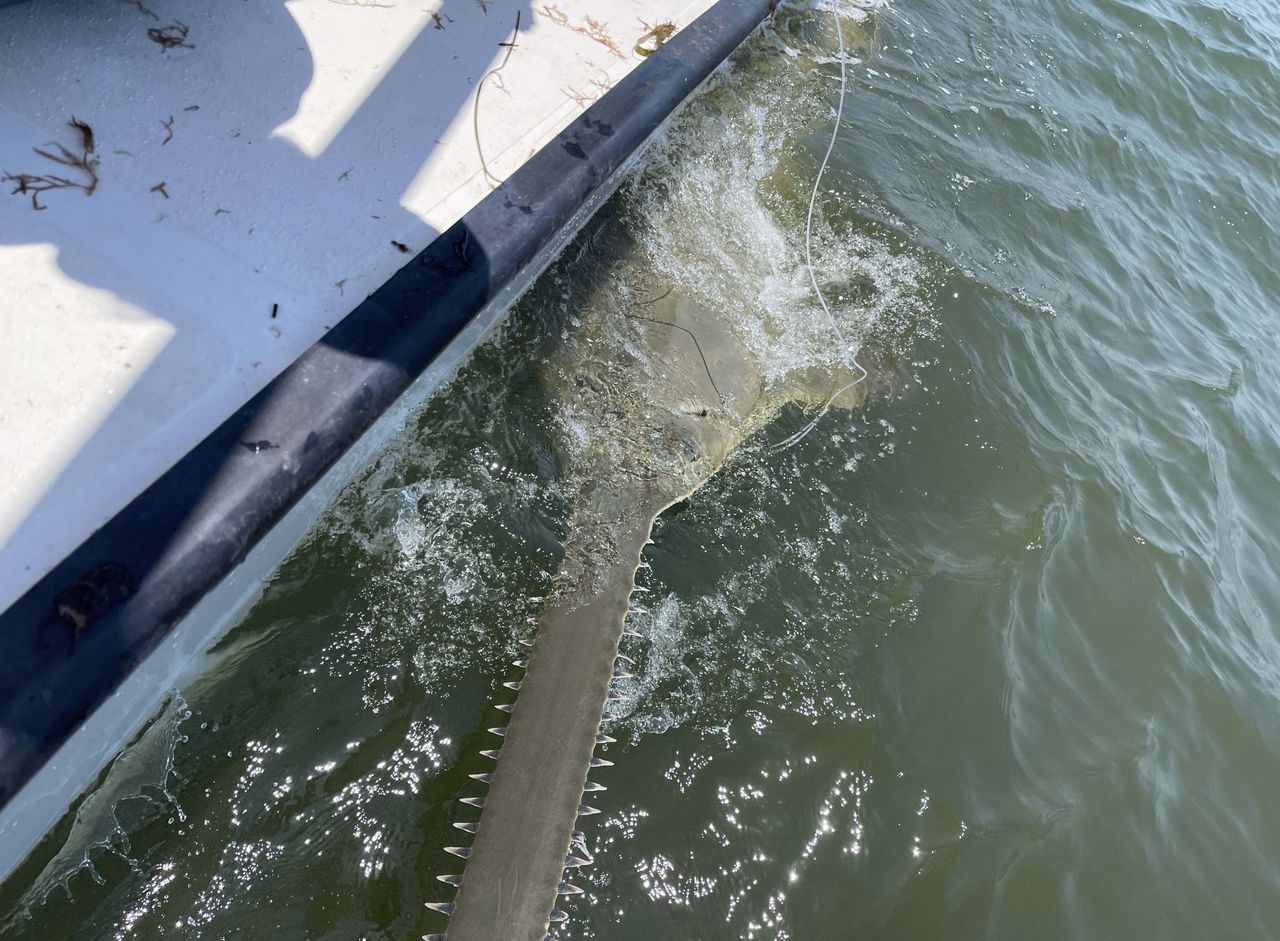Endangered sawfish tagged off Florida coast for first time in decades
A 13-foot smalltooth sawfish was caught and tagged by researchers and students off the Florida coast, marking the first time the endangered fish had been tagged in 30-40 years, according to the Florida Museum of Natural History.
According to the National Oceanic and Atmospheric Administration (NOAA), population numbers for the smalltooth sawfish declined rapidly during the latter half of the 20th century, due largely to habitat loss from coastal development and getting accidentally caught in commercial fishing operations, thanks in part to their saw-like snouts which can easily become entangled in nets.
As a result, in 2003 NOAA designated the U.S. population of the smalltooth sawfish for listing as an endangered species under the federal Endangered Species Act. By 2014, the non-U.S. population had also been designated as endangered.
Sawfishes, while shaped like sharks, are actually rays. They once called the waters ranging from New York to Texas home, but now are largely limited to the areas off the Florida coast.
The museum says Florida researchers caught the sawfish off the coast of Cedar Key on June 6 during a shark field course being conducted by Dean Grubbs from Florida State University and Gavin Naylor, head of the museum’s shark research program.
“This is the furthest north an individual has been tagged by the sawfish recovery team in the last 30 to 40 years,” Naylor said in a release from the museum.
Naylor and Grubbs were ostensibly fishing for a juvenile shark for their students to inspect. To their surprise, they found the 13-foot sawfish at the end of the line. Grubbs said he initially thought he had hooked a nurse shark, which are large bottom feeders which share many of the same habitats as sawfish.
“I felt something heavy on the line, and my first thought was that it was likely a nurse shark,” said Grubbs.
But Grubbs quickly came to the realization what he had was not a nurse shark.
“I was pretty sure this was a sawfish, but I remained stone-faced because I didn’t want to disappoint the students if I was wrong,” he said. “I saw the tail before the rostrum, so I lost my calm at that point and screamed ‘Sawfish! It’s a sawfish!’”
Grubbs and his students got in the water and held on tight to the sawfish while others returned to shore to retrieve a tracking device, which they had not anticipated needing for their shark outing. The tag will record the sawfish’s movements for the next decade and will be used a part of wide-ranging partnership to monitor sawfish populations.
The museum also said the sawfish caught last month had mating scars on its fins and sides. While records of sawfish mating habits are few, rays and sharks exhibit similar mating behaviors in which the male bits the fins of the female prior to mating.
Smalltooth sawfish have a lengthy lifecycle, the museum said, in which females give birth to a small litter of seven to 14 juveniles, which take several years to reach reproductive maturity. Their slow development has limited the recovery of sawtooth populations, but mating scars are a positive sign that their numbers are continuing to rebound.
Naylor said catching and tagging the smalltooth sawfish was both an incredible experience for the students, as well as encouraging for the future of the species.
“I can’t think of a better way for a group of young people studying environmental and conservation biology to learn about this critically endangered and incredibly spectacular animal,” he said. “So much of the news about Earth’s climate and environment is doom and gloom, but this is a potent reminder that if you leave things alone, many species are capable of recovery.”
